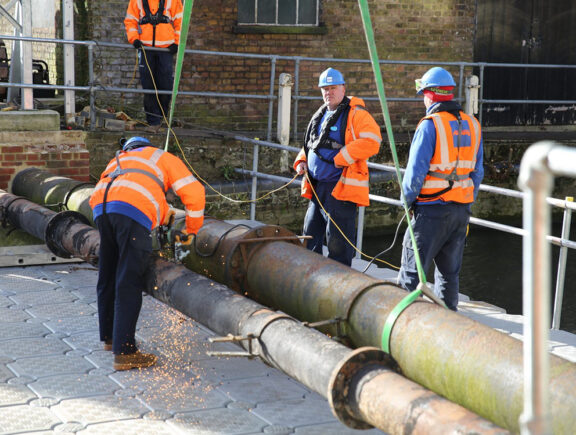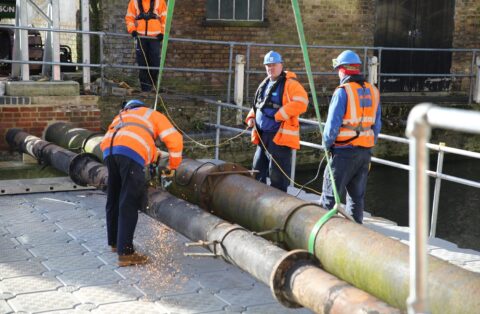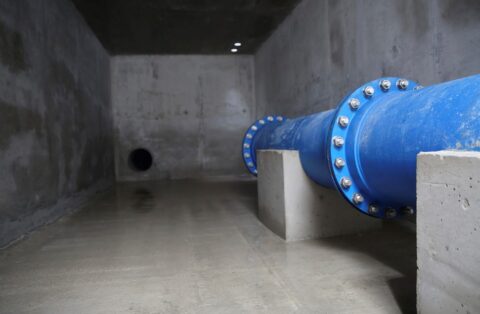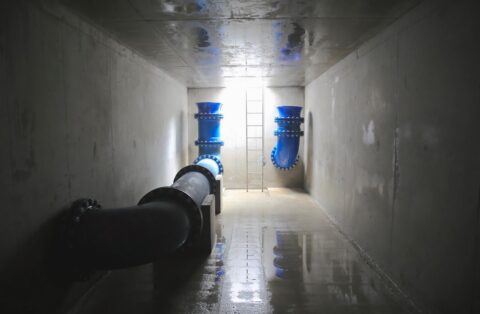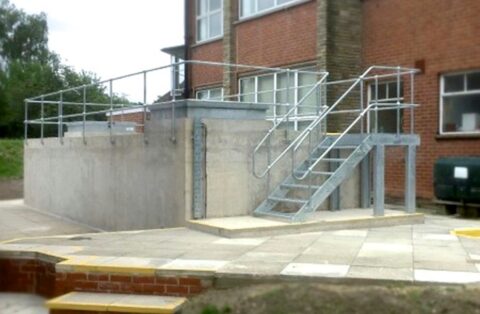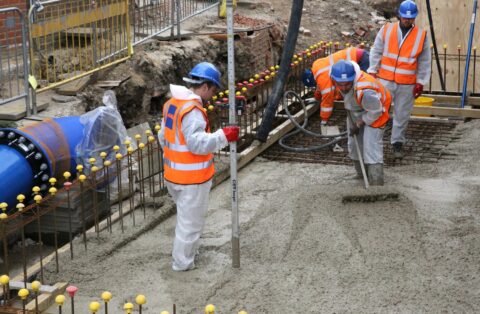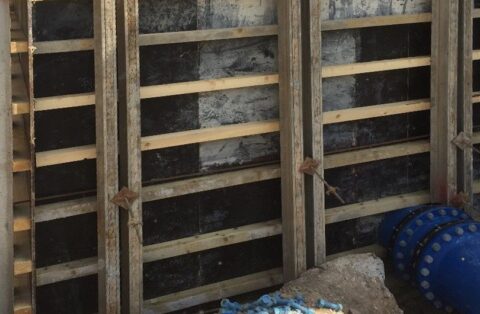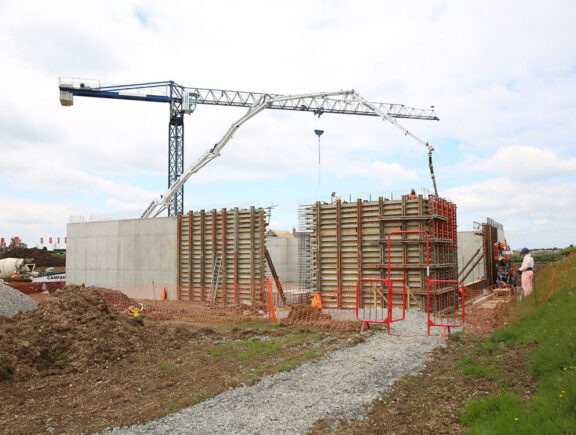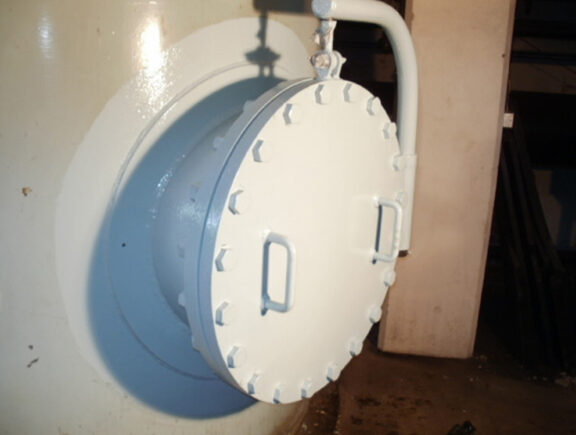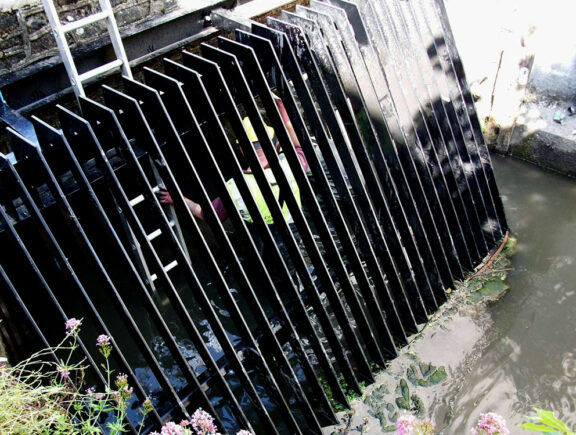The existing headwall had to be removed to allow the pipework to be renewed which was rebuilt upon completion. Throughout the installation a foam pig was pulled through each section of pipework prior to installation to ensure clean pipes.
Following the final connection, pipes were flushed from both directions with the flushed water sent to waste. The pipework was then put into service with samples taken to ensure the results were satisfactory and safe for service.
The next operation was to continue the pipework underground from the headwall up to a pre-existing valve. As new pipework had to connect to the pre-existing service underground, several challenges were brought to light. Firstly, gas mains, electric cables and water mains were all discovered. Although it was thought many were redundant, due to the uncertain nature, all had to be handled as potentially live. The pipework was eventually brought through to its termination point on the existing valve and pressure tested. The pipe was then pressure tested using hydrostatic pressure testing equipment to 10.5 bar. Once passed, the final connections were then made.
Works then started on the excavation of the break tank, the tank measured 9.5m X 3.5m and the excavation for the tank approximately 2m from ground level. During the excavation of the tank, further old services were encountered and the remains of an old underground tank were found. This caused additional delays, as it was again unknown whether these services were live or redundant. To avoid a suspected live water main, the new break tank was repositioned to a slightly new location. This meant a slight change to the outlet pipework which originally was going to come out of the side of the tank.
Formwork was made in situ as this was deemed to be the easiest way to construct the tank. There were two hatches on the new tank; one is man access and the second for telemetry. The concrete up-stands for these were constructed following the completion of the tank roof. Each of the up-stands was fitted with a LPCB4 Technocover.
The new break tank is approx. 1.5m above ground. A galvanised steel staircase and platform was installed along with galvanised steel handrail to the perimeter of the tank roof. Once the tank had been completed, the existing drainage that had previously been removed to allow tank construction was reinstated, an ACCO drainage channel was installed to either side of the tank and incorporated into the main drainage system.
The tank roof was then flooded as part of the quality checks to ensure no external water ingress. Once this had been approved, the tank was filled to 80% capacity and the water level was measured and left for 4 days, to carry out a drop test to check that the tank was water tight. This test was successful. Stonbury then pumped the water out of the tank to a nearby drain, the tank was cleaned and disinfected ready to go into service.
When the back filling had been completed to the tank, alarm and telemetry cables were installed from the production office building to the break tank and commissioned by an approved contractor. Whilst this was taking place Stonbury were reinstating the slabbed area around the tank. The tank was put into service to allow the old contact tank to be decommissioned. The decommissioning of the old tank included: Pumping of the old water to a nearby drain, blanking off the new 450mm valve previously installed and removal of the 500mm cross connection pipework at the back of the new break tank and installing 2 blank flanges.
